Blog
Brazilian Jiu-Jitsu- BJJ: History and Facts
- Thursday April 8th, 2021
- Posted by: Amanda Ennes
- Category: Brazil
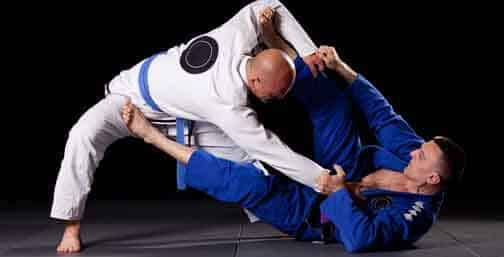
The Brazilian Jiu-Jitsu is also known as BJJ around the world. It is a Brazilian martial art sport based on grappling and submission holds. BJJ was mainly developed in Brazil by the Gracie family, after being trained by Japanese judoka, Mitsuyo Maeda.
This self-defense combat sport revolves around the concept that a smaller and weaker fighter can successfully use leverage and weight distribution to defend themselves against stronger and heavier opponents.
Table of Contents
ToggleThe History of Brazilian Jiu-Jitsu
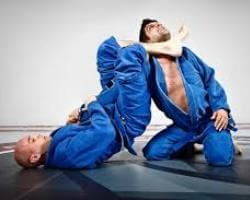 It is hard to confirm exactly when the moves and elements of jiu-jitsu originated. However, the history of Brazilian Jiu-Jitsu has its origins with Japanese judo expert Mitsuyo Maeda and Brazilian martial artist Carlos Gracie.
It is hard to confirm exactly when the moves and elements of jiu-jitsu originated. However, the history of Brazilian Jiu-Jitsu has its origins with Japanese judo expert Mitsuyo Maeda and Brazilian martial artist Carlos Gracie.
Mitsuyo Maeda arrived in Brazil in 1914, in a quest to spread judo art around the world. In 1917, Carlos Gracie became Maeda’s student, passing his knowledge also to his brothers, especially Hélio Gracie. Consequently, the Gracie family started to adapt the judo moves and techniques to their abilities. Particularly, they started incorporating a lot more ground fighting into the martial art itself.
Later, the Gracie family started a heavy marketing campaign to spread new Brazilian Jiu-Jitsu around the country. Their quest was to provoke other fighters to join them in combat. That way, they could showcase that, in Jiu-Jitsu, weaker fighters could easily beat stronger ones through their techniques.
Brazilian Jiu-Jitsu Schools
The Gracie family founded the first Brazilian Jiu-Jitsu school in Rio de Janeiro in 1925. In a small rented house, the first generation of Gracie brothers lived and worked together. They committed to build their life project, forging their family spirit, and working hard. But, more importantly, focused on what would become an extraordinary success for their family over the years.
As time passed by, the Gracie brothers and their kids were able to expand the business. They moved to a bigger gym and opened new schools.
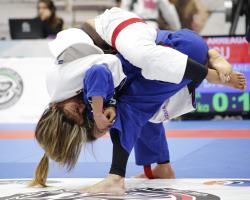 In the ’80s the family decided to invest in a gym in Barra, a then developing neighborhood in Rio de Janeiro. That was when Gracie Barra originated.
In the ’80s the family decided to invest in a gym in Barra, a then developing neighborhood in Rio de Janeiro. That was when Gracie Barra originated.
As a result of the hard work, Gracie Barra is now one of the biggest Brazilian Jiu-Jitsu associations in the world. They have over 700 branches along every continent of the planet. These schools follow the teaching methodology and standards developed by Carlos Gracie Jr, son of Carlos Gracie.
Becoming a National Sport and Popular Around the World
Throughout the ’70s and ’80s, different Brazilian Jiu-Jitsu teams started to organize tournaments. The BJJ instructors publicized these competitions in order to encourage and stimulate students to train and commit to the sport. By that time, other Brazilian Jiu-Jitsu schools were being open around Brazil as well. Consequently, a spark of rivalry started to grow among them, fueling motivation in young students. That was a very important aspect that helped the growth of the sport around Brazil.
When first introduced as a martial art in an Ultimate Fighting Championship, the world was shocked to see an apparently weaker fighter defeating their opponent by fighting mainly on the ground, using chokeholds and joint-locks.
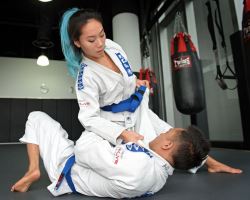 Such impact in global martial art tournaments caused a high demand for Jiu-Jitsu instruction all over the world.
Such impact in global martial art tournaments caused a high demand for Jiu-Jitsu instruction all over the world.
Today, Brazilian Jiu-Jitsu is a martial art that implements discipline, morals, and respect for others. The techniques and moves are respected among the martial art community all around the world. The goal of BJJ is to make the fighter tolerant and confident in his decisions, showing high levels of discipline.
Style of fighting
Brazilian Jiu-Jitsu is a predominantly ground-based martial art. It uses the principles of leverage, angles, pressure, and timing to achieve a non-violent submission of the opponent. This martial art focuses on the skill of controlling the opponent through techniques such as chokes, locks, mounts, and takedowns.
Main Schools and Teams
- Gracie Barra
- Alliance
- Atos Jiu-jitsu
- CheckMat
- GF Team
- Nova União
- Carlson Gracie Team
- Cícero Costha Internacional
- Ribeiro Jiu-Jitsu
- Team Nogueira
- BJJ Globetrotters
Techniques
These are a few techniques of Brazilian jiu-jitsu:
- Double leg takedown
- Throws
- Single leg takedown
- Hip toss takedown
- Leg trip
- Chokeholds
- Joint locks
- Armbar
- Compression locks
- Leglocks
- Wristlocks
- Guard
- Side control
- Back mount
Ranking system
The BJJ ranking system is differentiated by color, which indicates the technical knowledge and practical skill of the fighter. These belts are also ranked according to the age of the practitioner.
Learn Portuguese in Rio de Janeiro and experience the Brazilian culture at Caminhos Language Centre.


 Deutsch
Deutsch Français
Français Português
Português Español
Español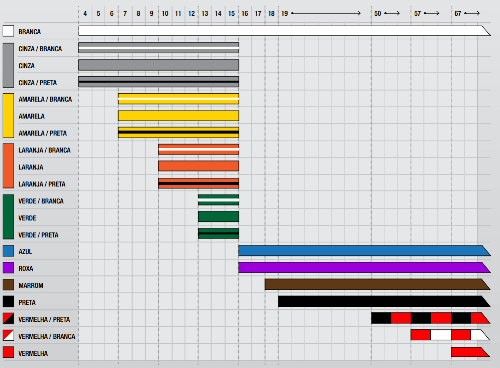


Eu sou indio brasileirão…eu dava muito valor os profissionais mestre…professores de todas as academia do Brasil…de jiu justsu…Nos aqui no Amazonas esta praticamos os arte marciais de Jiu justsu indígena…meus parabéns os professores ..
Olá gostaria de saber mais sobre esse jiu justsu indígena! Onde posso encontrar mais informações?
Sou totalmente cégo,e me adaptei bem com os movimentos e posição da arte